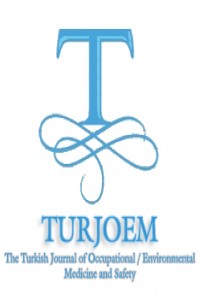Abstract
Dental amalgam
is a restorative material has been used in dentistry for a long time which
contains elemental mercury approximately %50 with other metals such as silver,
tin, copper and zinc. In recent years, new restorative dental materials have
become more convenient for dental filling. However, dental amalgams maintain
their popularity due to the properties such as strengthy, longevity, easy
application and lower cost. Despite these advantages, usage of amalgam
restorations is restricted because of the side effects and toxicity, even more
it is banned in some countries such as Norway, Denmark and Sweeden. Dental
amalgam continuously releases low levels of mercury vapor. Elemental mercury in
dental amalgam is exposed via inhalation from filling, then get into the
bloodstream and mainly target the brain by crossing blood brain barrier
rapidly. In addition to toxic effects on central nervous system, elemental
mercury may cause damages on renal, respiratory and cardiovascular system, also
gingival tattoos. Current evidence suggests that amalgam poses a clear risk to
developing fetuses and children and to people with common genetic
susceptibilities. This statement is not intended to imply that other dental
materials are without risk. Several factors affect the release of mercury from
amalgam restorations; number and surface of dental amalgam,
inhalation/ingestion absorption levels, magnification factors, individual
habits such as eating, tooth brushing, nose-mouth breathing ratio and body
weight. Estimated average intake of elemental mercury from dental amalgam is
1-5 μg/day and tolerable intake for elemental mercury vapor is 0.2 ug/ m3
established by World Health Organization. The daily elemental mercury in¬take
levels lower than the identified threshold level. Therefore, further studies
are needed to elucidate this confliction.
References
- Sezen YILMAZ SARIALTIN, Başak Özlem PERK
- Ankara University, Faculty of Pharmacy, Department of Pharmaceutical Toxicology, Ankara, TURKEY
Abstract
References
- Sezen YILMAZ SARIALTIN, Başak Özlem PERK
- Ankara University, Faculty of Pharmacy, Department of Pharmaceutical Toxicology, Ankara, TURKEY
Details
| Journal Section | Articles |
|---|---|
| Authors | |
| Publication Date | February 16, 2017 |
| Published in Issue | Year 2017 Volume: Volume 2 Issue: İssue 1 (1) - 2.İnternational Congress Of Forensic Toxicology |

